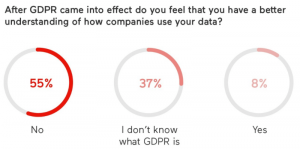What is company culture? Look around you – company culture encompasses everything from your office layout, to the way you collaborate with peers and managers, to the costume contest held every Halloween. In today’s workplace landscape, culture has quickly moved from a “nice-to-have” to a “must have”. However, a recent study by Deloitte University Press reported that HR leaders consider culture and engagement their number one challenge.
So, how can your organizations create a strong company culture and avoid toxicity? It starts at the top. Leadership must vigilantly watch for warning signs and take proactive measures to ensure culture is protected.
Here are three warning signs of toxic company culture:
1. Knowledge Hoarding
Shared knowledge increases efficiency, improves employee performance, and fosters innovation. However, some individuals develop a “figure it out yourself” attitude instead of sharing tacit knowledge openly and willingly. They become territorial and lack the willingness to share their hard-earned skills and experience with colleagues. Some hoard information because they feed off of power and control. Others hoard knowledge because they believe sharing their knowledge with others will only make them disposable.
No matter the reason, knowledge hoarding is a top contributor to toxic company culture and puts the organization at significant risk. Trust deteriorates, cliques develop, and the potential for knowledge loss increases. Instead of working together to achieve success, everyone looks out for themselves – a situation that undoubtedly makes innovation an impossible goal.
2. Unmotivated Employees
Unmotivated employees don’t just lack energy – they drain energy from others as well. Instead of exuding positivity and a drive to succeed, their negative attitudes, constant complaints, and overall unhappiness result in a contagious disconnect from an organization’s mission and goals.
When an employee is unmotivated, he or she becomes much more than the person complaining at the water cooler or wasting work hours due to an extra long lunch. These individuals become liabilities. Their toxicity can quickly drive away even the most dedicated and passionate of employees. The Cornerstone OnDemand report indicates that working with a toxic colleague encourages 54% of good employees to quit. By making their co-workers significantly more likely to leave, toxic employees lead to rising replacement costs; hiring a single toxic employee onto a team of 20 workers costs approximately $ 12,800, whereas hiring a non-toxic employee costs an employer an average of $ 4,000.
3. Lack of Communication
Without open communication, employees are left unaware of what is really going on throughout the company. This leads to paranoia, confusion, and unnecessary stress. Despite announcements being made and meetings being held, a lack of understanding will exist until employees are given a safe space to regularly communicate.
Further, leadership must work to establish an environment where employees feel welcome to discuss issues and improvements with management. Open dialog not only makes employees feel respected and appreciated, but also builds transparency, a hallmark of good company culture.
How Can Organizations Combat Toxic Company Culture?
All managers – C-Suite executives included – are responsible for creating a positive company culture. To prevent toxicity from spreading in your organization, start by doing the following:
- Conduct a culture or employee engagement survey.
- Create an internal knowledge base where employees can easily find important company documentation and announcements.
- Launch an online community that enables employees to share ideas, build relationships, and feel that their voices matter.
- Clearly communicate expectations and tie core values – such as a “love of learning” or “respect for others” – into performance reviews.
- Encourage employees to share feedback with and propose new ideas to leadership.
- Schedule bi-weekly one-on-ones to assess employee morale and prevent any issues from escalating.
- Invest in leadership coaching and instate an “open door” policy.
(21)




